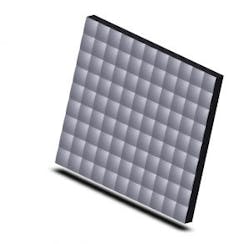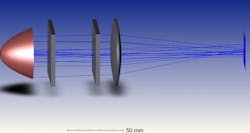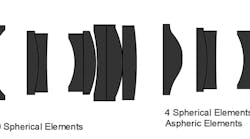Microstructure lens arrays, also referred to as microlens arrays, are meticulously crafted arrangements of sub-lenses at the nanometer scale, assembled in a specific sequence. Each sub-lens in the array possesses its own independent optical axis. However, when viewed as a cohesive unit, these sub-lenses form a shared main optical axis. This remarkable characteristic sets microstructure lens arrays apart from conventional compound lenses, granting them an exceptional degree of parallelism. As a result, each sub-lens can transmit light sources independently and without interference.
The application of microstructure lens arrays lies within the realm of optics, particularly in the domain of microlens arrays. This innovative technology comprises a uniform pattern of countless micro lenses incorporated into the screen panel, effectively curbing the loss of light caused by internal reflections. Consequently, the screen’s brightness levels are significantly enhanced, enabling a more vibrant and captivating visual experience for the user. Distinct from this, microlens arrays represent a type of diffractive microlens and lens array featuring surface phase relief structures and discontinuous surface shapes. While there may be some overlap in their applications, microstructure lens arrays focus on tiny, lens-like structures as opposed to individual lenses, offering diverse functions in optical systems.
Application – Microstructure Lens Array
Microstructure lens arrays find their greatest utility in tailor-made applications such as beam shaping, beam homogenization, fiber coupling, and 3D imaging. Additionally, they serve indispensable roles in a multitude of fields, including medical devices, wavefront sensors, optical communication, laser optics, and metrology, among others. The versatility of microstructure lens arrays ensures their valuable presence in an array of cutting-edge technologies and industries, contributing to advancements and improvements in various optical systems.
How does a microstructure lens array achieve uniform light? What are the advantages?
Microstructure lens arrays excel in achieving a harmonized approach to customization and diversity, setting them apart from conventional optical components. Their unique ability to cater to distinct customer requirements for beam patterns makes them indispensable in the field of optics. Beyond their fundamental functionalities of focusing and imaging, their small sub-lens sizes and high integration enable them to achieve effects unattainable by traditional optical elements. This pivotal characteristic has rendered them essential components in cutting-edge optical systems, playing a crucial role in the advancement of optical technology. Let us delve into one principle of microstructure lens arrays, known as the homogenization principle, which elucidates how they achieve uniform light distribution.
In the homogenization principle, depicted in the accompanying illustration, a laser beam passes through each individual microlens. As the light traverses these microlenses, they effectively homogenize the beam, resulting in a uniform and consistent output. This uniformity ensures a more precise and reliable optical performance, making microstructure lens arrays particularly beneficial in various applications.
How many types of microstructure lens arrays are there? What are their advantages?







